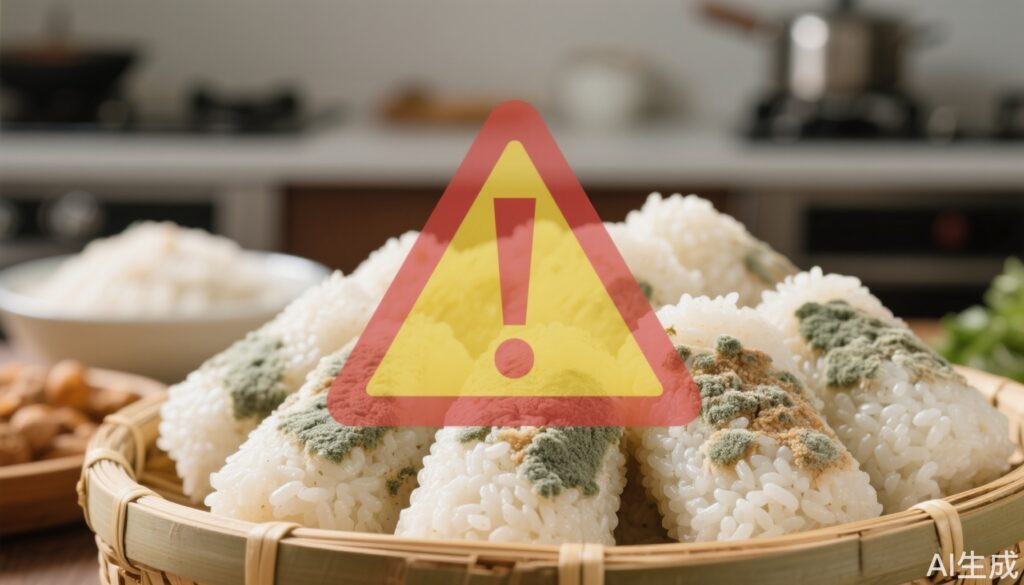Bongkrekic acid, though unfamiliar to many, is a naturally occurring, highly toxic compound responsible for some of the most lethal food poisoning outbreaks in East and Southeast Asia. The toxin is produced by the bacterium Burkholderia gladioli pathovar cocovenenans, which flourishes in certain environments where starchy foods are fermented under unsanitary conditions. In China, outbreaks have been linked to traditional foods such as fermented rice products (like “sour soup” or “chou mi”), corn-based foods, and coconut-based products in Indonesia. Even though cases are rare, the mortality rate is alarmingly high, making awareness and prevention crucial.
Scientific and Clinical Evidence: What the Data Tell Us
Bongkrekic acid is notorious for its ability to disrupt mitochondrial function, leading to multi-organ failure. The toxin is heat-stable, meaning regular cooking or boiling does not destroy it. Clinical symptoms of poisoning typically appear within hours of ingestion and may include vomiting, abdominal pain, diarrhea, and rapid progression to liver and kidney failure, sometimes ending fatally within 24–72 hours.
According to a 2020 review published in the journal Food Control, over 30 outbreaks have been reported in China since the 1970s, with a case fatality rate often exceeding 40%. Laboratory testing can detect bongkrekic acid in food remnants or patient samples, but diagnosis is often based on clinical suspicion and epidemiological links.
Case Vignette: A Family Dinner Gone Wrong
Ms. Li, a 45-year-old mother from Yunnan, prepared a traditional fermented rice noodle dish for her family. Within hours, four family members developed severe abdominal pain and vomiting. Despite emergency treatment, two succumbed to multi-organ failure. Investigation revealed improper fermentation in a warm, humid kitchen, allowing the growth of toxin-producing bacteria.
Misconceptions and Harmful Behaviors
A common misconception is that fermentation automatically makes food safer. While controlled fermentation is beneficial and underpins many global cuisines, unsanitary or home-based fermentation—especially of rice, corn, or coconut—can create a perfect breeding ground for dangerous bacteria. Another myth is that thorough cooking will neutralize any toxin present. Unfortunately, bongkrekic acid remains toxic even after boiling, frying, or steaming.
People also sometimes taste or consume foods with abnormal odor, color, or appearance, thinking that visible spoilage is the only indicator of danger. In reality, foods can contain lethal amounts of bongkrekic acid even if they appear normal.
Correct Health Practices and Practical Recommendations
The good news is that bongkrekic acid poisoning is preventable. Here are key steps for both consumers and producers:
– Avoid home fermentation of rice, corn, or coconut products unless you have reliable knowledge and proper equipment.
– Discard any fermented food that smells off, appears slimy, discolored, or has mold growth—when in doubt, throw it out.
– Use clean, sanitized containers for any fermentation projects.
– Refrigerate fermented foods promptly and do not consume products stored at room temperature for prolonged periods.
– Purchase fermented products from reputable sources that follow food safety guidelines.
– Public health authorities should continue to educate at-risk communities, especially in rural areas, about the risks of improper fermentation.
For healthcare professionals, recognizing the clinical presentation and epidemiological clues is vital for rapid intervention and outbreak containment.
Expert Insights and Commentary
Dr. Zhao Wen, a food safety expert (fictional), notes: “Bongkrekic acid is a silent killer because it doesn’t change the taste or smell of food. The best defense is prevention—never take chances with homemade fermented foods if you’re unsure of the process.”
Epidemiologists stress the importance of community education and early reporting of suspected cases. Rapid public health response can prevent further cases during an outbreak.
Conclusion
While bongkrekic acid poisoning is rare, its devastating consequences make vigilance essential—especially for those who enjoy or prepare traditional fermented foods. By understanding the risks, debunking dangerous myths, and practicing safe food handling, we can continue to appreciate culinary traditions without compromising our health.
References
1. Chen, J., et al. (2020). Bongkrekic acid poisoning: A review of outbreaks in China. Food Control, 110, 107011.
2. World Health Organization. (2019). Foodborne Disease Outbreaks: Guidelines for Investigation and Control.
3. Chinese Center for Disease Control and Prevention. (2022). Health Education Manual on Foodborne Toxins.



